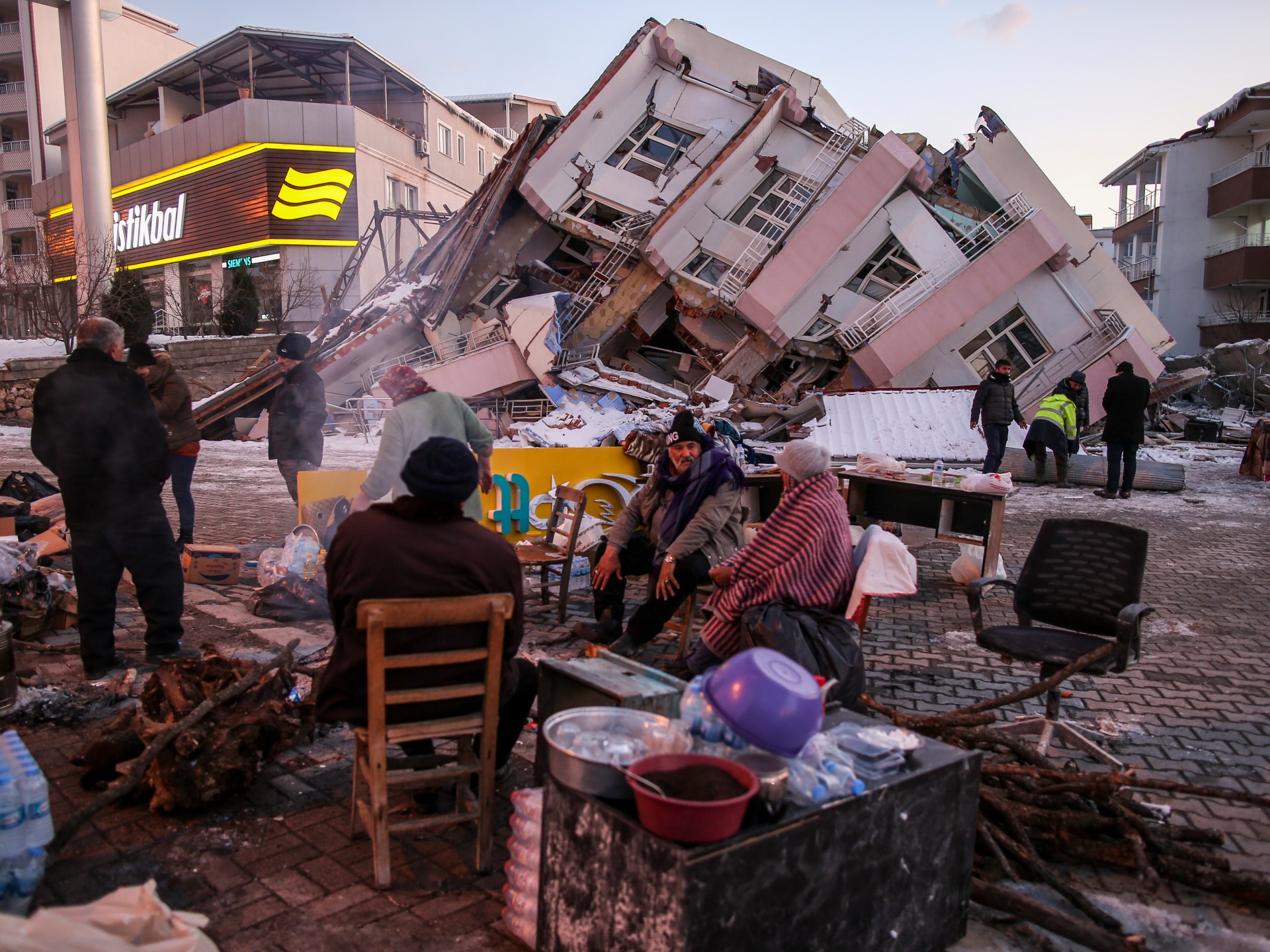You are using an out of date browser. It may not display this or other websites correctly.
You should upgrade or use an alternative browser.
You should upgrade or use an alternative browser.
Thousands feared dead in 7.8 magnitude earthquake in Turkey
- Thread starter Elim Garak
- Start date
More options
Who Replied?Elim Garak
Veteran
Definitely says a lot.

Why did so many buildings collapse in Turkey?
A combination of factors led to the widespread destruction that has left thousands still trapped under debris.
snippet:
Code enforcement
In November 2022, after a magnitude 6 earthquake damaged more than 2,000 buildings in Duzce, northern Turkey, environment and urbanisation minister Murat Kurum underlined that the authorities were working towards making every building in the country “earthquake safe by 2035”.
“We already rebuilt 3.2 million residences,” Kurum said in a social media post. “250,000 residences across 81 provinces and 992 districts are currently being transformed [to meet current regulations]. 6.6 million houses and businesses have been audited. 24 million of our citizens are currently living in earthquake-safe abodes.”
These ambitious efforts, however, were not able to prevent the disaster.
“On paper, Turkey’s seismic design code is up to global standards – it is actually better than most,” Turkkan said. “In practice, however, the situation is very different.”

Rescue teams evacuate a survivor from the rubble of a destroyed building in Kahramanmaras, southern Turkey, on February 7, 2023 [Khalil Hamra/AP Photo]
The government offered financial incentives but did not make participation in its urban transformation project compulsory. This effectively meant only people who were in a position to make money from rebuilding – people in possession of valuable plots suitable for further development – agreed to demolish their old properties and rebuild according to the latest code. Many did not want to spend money on rebuilding work or reinforcements that did not seem urgent. This is why, experts say, more than 20 years after the Marmara earthquake, Turkey is full of buildings constructed using sub-par materials and long-discredited construction techniques that immediately crumble when faced with a strong tremor.
“This saddens me deeply as an engineer,” Turkkan said. “If we managed to get everyone on board, we could have either reinforced or rebuilt all defective buildings in the past 20 years. We could have saved at least 5,000 of the buildings that we lost on Monday from complete destruction. We could have saved many, many lives.”
Experts believe the government and local authorities could have taken further precautions to ensure all buildings were safe and earthquake design regulations are being implemented in all contexts.
“For years we held conferences, wrote reports and sent them to local authorities. We told them big earthquakes will inevitably hit cities like Hatay and Gaziantep again,” Tuysuz said. “We explained to them however strong, no building built directly on a fault line can survive an earthquake – it would be torn apart. We said we should create accurate fault-line maps for the entire country and transform areas directly on active fault lines into green zones with construction bans. No one listened.”


What the Earthquake Destroyed in the Heart of One Turkish City (Published 2023)
The Times identified nearly 200 buildings, many of them eight or more stories tall, in central Kahramanmaras that were damaged or destroyed.



I already despise earthquakes, the only few good things about Florida is that there’s no earthquakes. Hurricanes, yes but I can escape a Hurricane.
What the Earthquake Destroyed in the Heart of One Turkish City (Published 2023)
The Times identified nearly 200 buildings, many of them eight or more stories tall, in central Kahramanmaras that were damaged or destroyed.www.nytimes.com



Family Lives Matter
#FLM
Got an update today his cousin and they're whole family died.
Only one person survived from the block.
I can tell my step pops is feeling it despite the fact I made him laugh today I can see it in his eyes
Only one person survived from the block.
I can tell my step pops is feeling it despite the fact I made him laugh today I can see it in his eyes
Elim Garak
Veteran
Got an update today his cousin and they're whole family died.
Only one person survived from the block.
I can tell my step pops is feeling it despite the fact I made him laugh today I can see it in his eyes
 Damn sorry to hear that.
Damn sorry to hear that.Rev Leon Lonnie Love
damned mine eyes, DAMNED mine eyes!!
Hope Asli Tarcan is ok

 I entered this thread wondering if there's any brehs caught up in that quake while over there for their hair transplant appointment
I entered this thread wondering if there's any brehs caught up in that quake while over there for their hair transplant appointment 
Damn breh...sorry to hear thatGot an update today his cousin and they're whole family died.
Only one person survived from the block.
I can tell my step pops is feeling it despite the fact I made him laugh today I can see it in his eyes
Rip to the innocent
Rev Leon Lonnie Love
damned mine eyes, DAMNED mine eyes!!
Imagine this happening in a place like Manhattan with all those cheaply built highrise buildings huddled up together in that tiny space. 

They're still bickering about religious doctrine at this point..prayer clearly didn't help did it. And they pray harder than anybody else in turkey and Syria.
I'm sorry but it's a stupid way of thinking. If they come with bullshyt rules at a time like this it'll be hard to help them.
Neo. The Only. The One.
THE ONE
You know the civil engineers out there like

I wonder if this will be the end of Erdogan.
